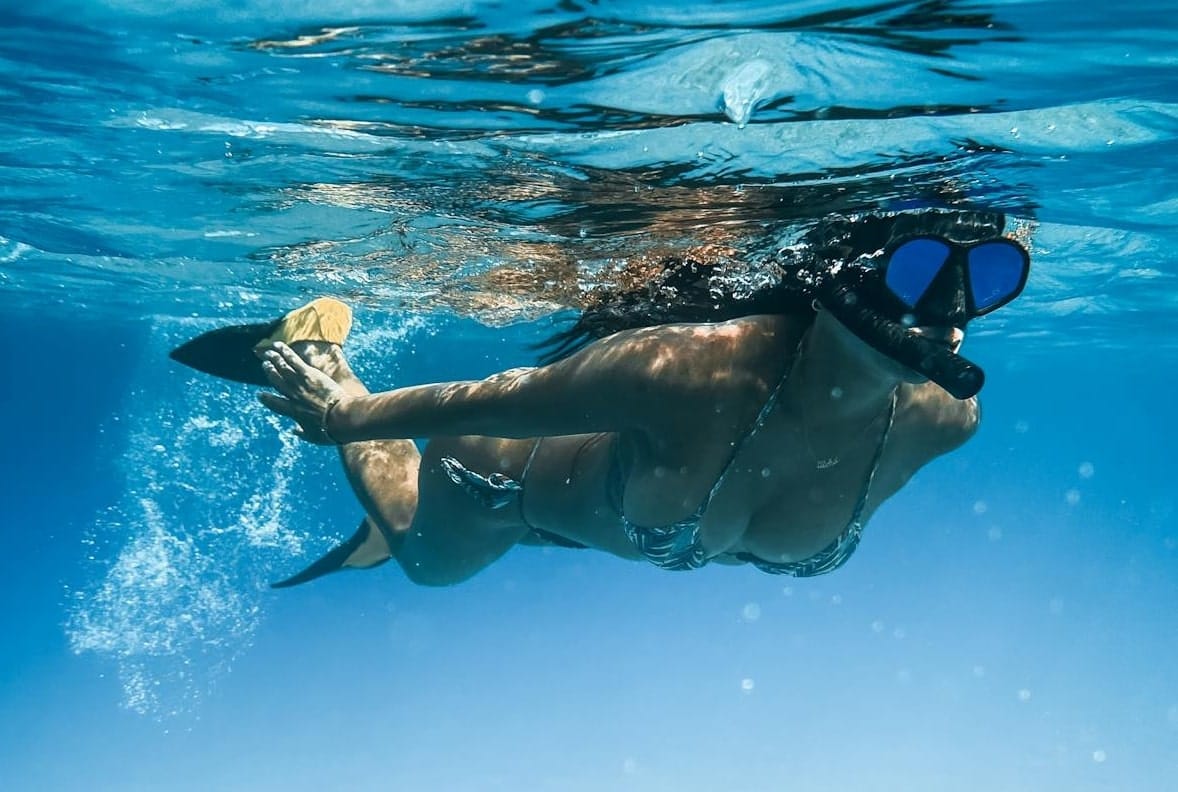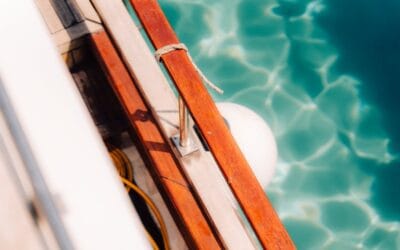Disclosure: As an Amazon Associate we earn from qualifying purchases. Some links in this article are affiliate links. If you use them, we may earn a small commission at no extra cost to you.
Choosing the right freediving mask without the hype
So, you’re getting into freediving. Maybe you’ve tried snorkeling. Maybe you’re a swimmer. Maybe, like u/ExitLag on Reddit, you’ve taken your first freediving lesson, had a blast, and realized the rental gear doesn’t cut it. The next logical step: buy your first freediving mask.
But which one?
You’re googling names like Cressi Calibro, Nano, Beuchat Maxlux, or even the legendary Sphera, and the forums are telling you “fit is everything,” or worse, “go try them all on.” That’s great advice—unless you live somewhere with no dive shops and limited inventory.
This article was written for you: the beginner freediver who’s serious about getting better, wants quality gear, and doesn’t want to waste money on hype or ill-fitting plastic.
What makes a mask “Freediving-Friendly”?
At the core of a good freediving mask are three things:
- Low Internal Volume
The less air inside the mask, the less you have to equalize at depth, and the more of your one breath you get to keep in your lungs. - Good Nose Access
Equalization is vital. Masks that press hard against your nose bridge, or have awkward pockets, make the process painful or awkward. - Reliable Seal
Every face is different. A perfect mask for someone else might leak like crazy on you. This is why you’ll often hear “fit is everything.”
Quick picks: beginner freediving masks available on Amazon (2025)
| Mask | Best For | Volume |
|---|---|---|
| Cressi Calibro | All-purpose diving/snorkeling | Low |
| Cressi Nano 2 | Deep dives and progression | Very Low |
| Aqualung Sphera X | Easy equalization and wide view | Ultra Low |
| Beuchat Maxlux S | Wide faces and visibility | Low |
| Mares X-Free | Pool training and casual freedives | Low |
| Cressi Focus | Budget scuba/snorkel/freedive mix | Medium |
Real advice from real beginners
“I live in a country where you can’t try many varieties of masks… so I’m choosing between the Cressi Calibro, Focus, or F1.”
— u/ExitLag, Reddit
If that sounds familiar, you’re not alone. Many beginner freedivers shop online without the luxury of trying on gear. So here’s what matters most:
-
Tempered glass lenses are more durable and resist distortion. Most beginner masks have this.
-
Plastic (polycarbonate) lenses — like on the Aqualung Sphera — are curved for better vision but scratch easily.
-
Nose size compatibility is real — people with bigger noses (even just slightly) often struggle with masks like the Nano or Focus.
“The Sphera fits my 5-year-old. It fits everyone. But yes, it scratches fast.”
— u/tuekappel
“I used the Calibro for freediving, snorkeling, and scuba. It never fogged. Even my 4’11 friend loved it.”
— u/Tomcat286
Detailed reviews
1. Cressi Calibro
Why it’s a great pick:
The Cressi Calibro offers a low-volume, all-purpose design ideal for freedivers, snorkelers, and scuba divers alike. It features Cressi’s integrated fog-reduction chamber and a soft silicone skirt that fits securely on most face shapes. The dual-lens setup provides clear, wide vision underwater with good nose access for easy equalization.
Its solid performance across disciplines makes it a great first mask for those unsure whether they’ll stick exclusively to freediving.
Best For:
-
Multi-sport divers (freedive/snorkel/scuba)
-
Beginners wanting low fogging and wide view
-
Small to medium faces
Downsides:
-
Slightly bulkier than specialized freediving models
-
Not ultra-low volume for advanced depth
2. Aqualung Sphera X
Why it’s a great pick:
The Aqualung Sphera X is known for its ultra-low volume and panoramic curved lenses, making equalization at depth almost effortless. The frame is flexible and forgiving, offering a comfortable fit for a wide range of face shapes. While the acrylic lenses provide superb visibility, they can scratch more easily than tempered glass.
This is a favorite among freedivers who prioritize ease of equalization and visibility over perfect clarity at the edges.
Best For:
-
Line training, depth diving
-
Broad face compatibility
-
Divers who struggle with equalization
Downsides:
-
Lens edge distortion
-
Scratches easily without care
3. Cressi Nano 2
Why it’s a great pick:
The Cressi Nano 2 is a technical freediving mask with an aggressive profile, inclined lenses, and very low internal volume. It offers excellent visibility for its size and is well-suited for intermediate to advanced freedivers focused on depth and efficiency.
The structure is rigid for mask shape stability, which may not suit divers with wider noses or those needing a softer fit.
Best For:
-
Serious freediving and progression
-
Divers wanting high field of view with low drag
-
Small to medium faces
Downsides:
-
Stiff fit across the brow
-
Less forgiving for wide noses
4. Beuchat Maxlux S
Why it’s a great pick:
The Beuchat Maxlux S is a frameless, single-lens mask that offers a wide field of vision with minimal internal volume. Its ultra-soft silicone skirt conforms well to a variety of face shapes, making it one of the most comfortable options for beginners and crossover divers.
It’s also available in a range of bright colors and is a strong choice for those who freedive, snorkel, and scuba interchangeably.
Best For:
-
Wide or rounded faces
-
Divers seeking high visibility and comfort
-
Multi-sport diving
Downsides:
-
Not the lowest volume mask available
-
Slightly bulkier than frameless depth-focused designs
5. Mares X-Free
Why it’s a great pick:
The Mares X-Free is a soft, minimalist freediving mask with a low profile and clean design. Its skirt includes grip zones for nose clips, and the matte silicone helps reduce glare during surface time or shallow dives. It’s a great choice for training and casual freediving where comfort is key.
While not optimized for elite-level depth, it’s ideal for beginners and recreational freedivers.
Best For:
-
Pool sessions and shallow dives
-
Divers seeking lightweight, non-restrictive masks
-
Nose clip users
Downsides:
-
Less suited for deep or aggressive diving
-
Smaller field of view than panoramic designs
6. Cressi Focus
Why it’s a great pick:
The Cressi Focus is a classic, long-standing design often overlooked in favor of more advanced masks — but it’s actually a great entry-level option. It has a slightly higher internal volume than dedicated freediving models, but it’s soft, durable, and compatible with both snorkeling and scuba gear setups.
Its symmetrical lenses also make it easy to install prescription lenses, making it a rare budget mask with that flexibility.
Best For:
-
Beginners on a budget
-
Divers needing prescription lenses
-
Snorkeling + scuba + freediving crossover users
Downsides:
-
Higher internal volume means more air needed to equalize
-
Basic shape doesn’t offer the lowest drag or vision enhancements
Final beginner mask buying advice
-
Fit > Brand > Price
Even the “best” mask won’t work if it leaks on your face. If you can’t try in person, buy from retailers with a return policy. -
Tempered Glass > Plastic (usually)
Go for tempered unless you need ultralight + wide view like the Sphera. -
One Mask for All?
If you’re combining snorkeling, freediving, and maybe scuba later — Calibro or Maxlux are great picks. -
Don’t Overpay Yet
Save that $150 mask purchase for when you’re training regularly at 30m+. For now, most of the $40–$70 options are excellent.
Ready to choose?
Try to narrow it down based on:
-
Your face shape and nose (tight fits? pressure?)
-
Your intended use (line diving? snorkeling?)
-
Your budget and flexibility
And remember:
“Pick the one that fits your face. Like ski boots… but not on your face.”
— u/sbenfsonw, Reddit


